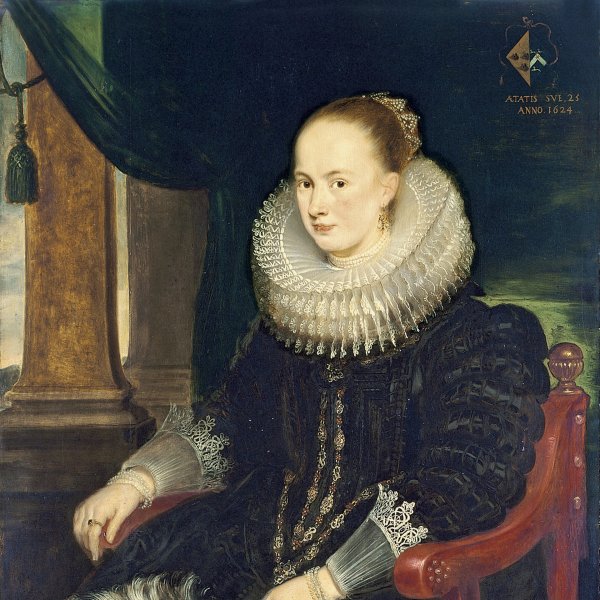Cornelis De Vos
Hulst, ca. 1584 -Antwerp, 1651
Cornelis de Vos was a painter and art dealer, born in Hulst around 1584 into a family of artists. In 1596 the family moved to Antwerp where Cornelis and his brothers Jan and Paul began their studies in the studio of the local painter David Remeeus. Having completed his apprenticeship in 1604 De Vos requested permission to study abroad, but there is no documentary proof that he did so. He is next mentioned in 1608 when he entered the guild of Saint Luke in Antwerp. In 1616 he became a citizen of that city and appears in the records as an art dealer. In 1609 he married Sussana Cock, stepsister of the landscape painter Jan Wildens. At this period De Vos worked with Rubens, Jordaens and Van Dyck on the cycle of paintings for the church of Saint Paul in Antwerp. In 1619 he was elected dean of the painters’ guild and that same year asked permission from the city authorities to travel to France in his capacity as art dealer in order to attend the Saint-Germain market in Paris. In late 1634 he again collaborated with Jordaens on the decoration of one of the triumphal arches to celebrate the entry into Antwerp of the Cardinal-Infante Fernando, and two years later worked with Rubens on the series of paintings for the Torre de la Parada in Madrid.
De Vos painted history and religious compositions but was most important within 17th-century Flemish art for his portraits, becoming the leading portraitist of the middle classes. His works in this field are characterised by the painstaking detail used to depict both the setting and objects that accompany the sitters, without detracting from the principal motif. His style reflects the influence of Van Dyck but he was more interested in reflecting middle-class values such as prosperity than imbuing his figures with aristocratic elegance. De Vos’ distinctive style is evident in both his individual and group portraits, which include large-format depictions of families.
De Vos painted history and religious compositions but was most important within 17th-century Flemish art for his portraits, becoming the leading portraitist of the middle classes. His works in this field are characterised by the painstaking detail used to depict both the setting and objects that accompany the sitters, without detracting from the principal motif. His style reflects the influence of Van Dyck but he was more interested in reflecting middle-class values such as prosperity than imbuing his figures with aristocratic elegance. De Vos’ distinctive style is evident in both his individual and group portraits, which include large-format depictions of families.





